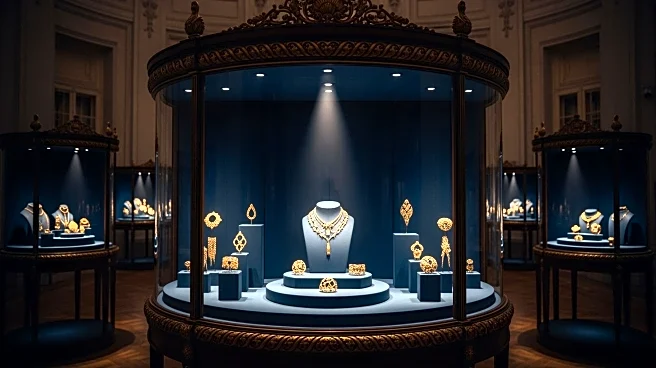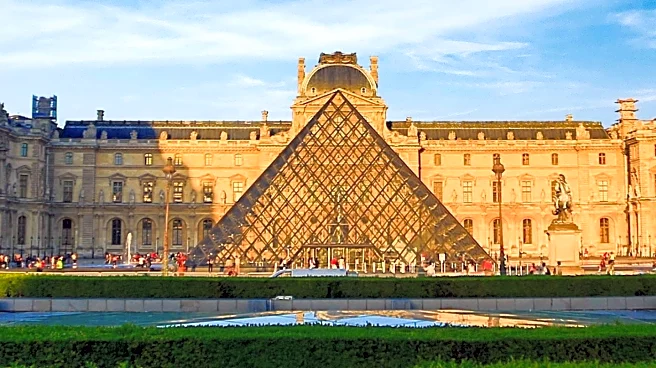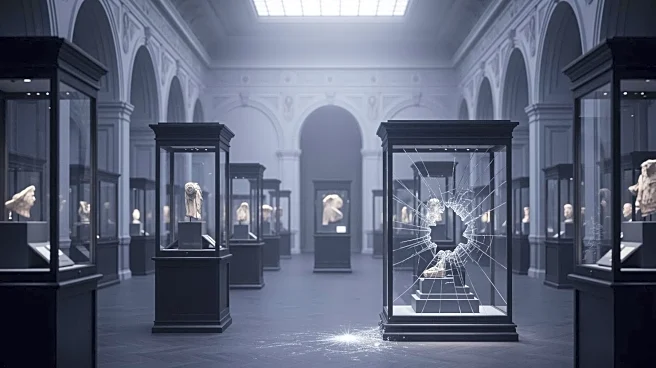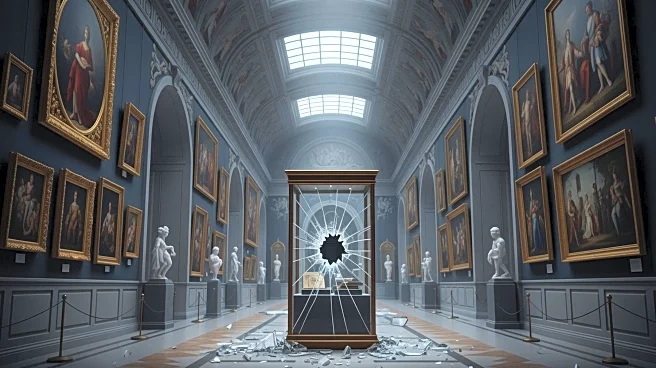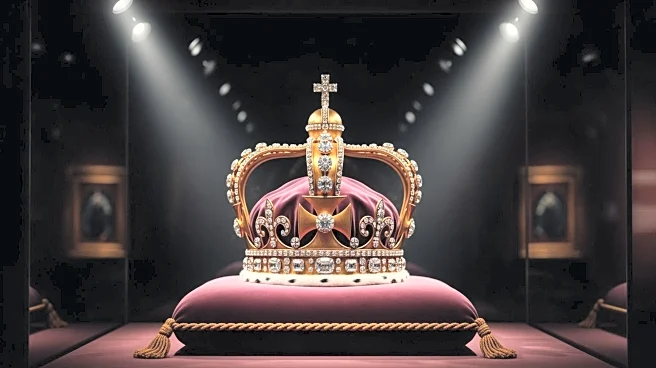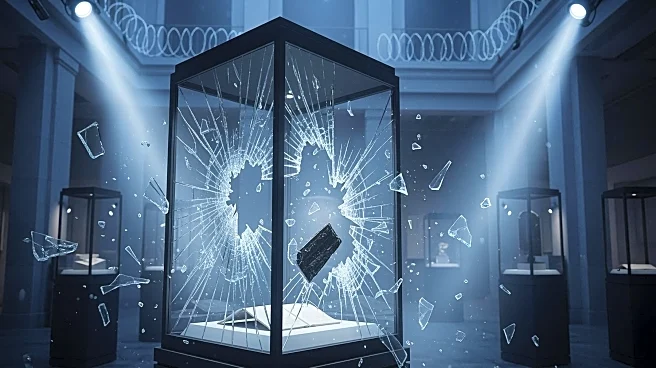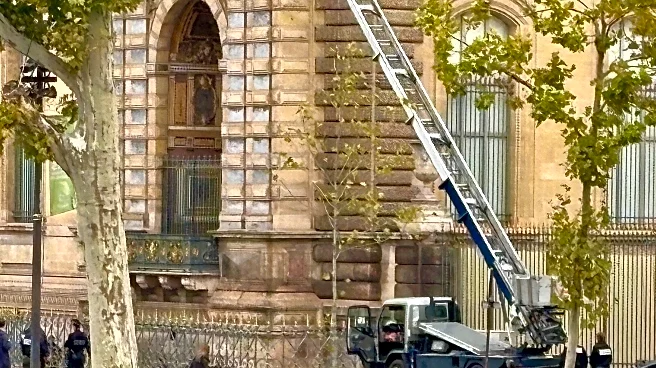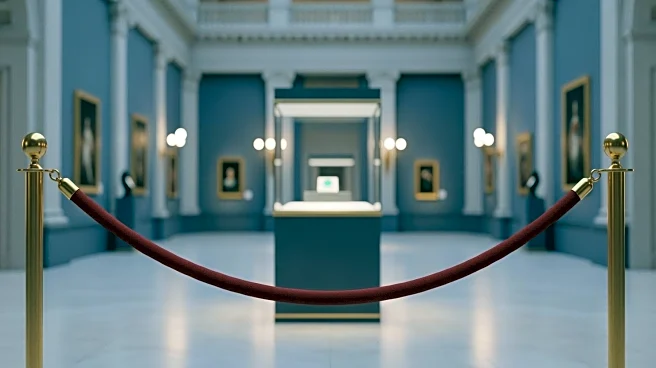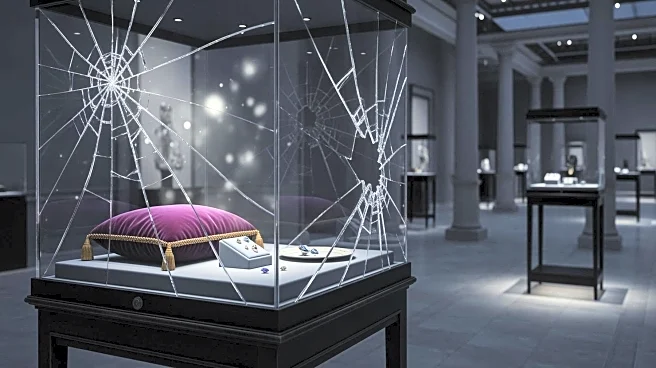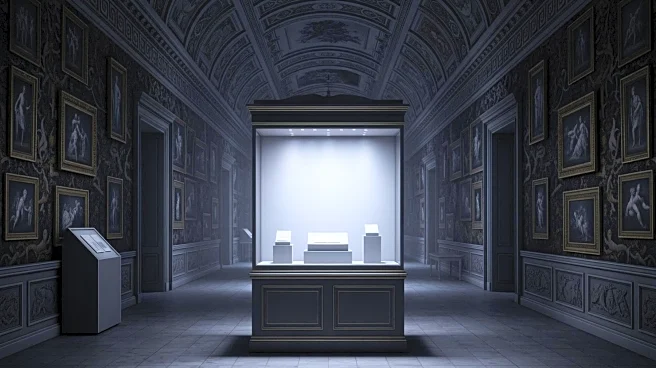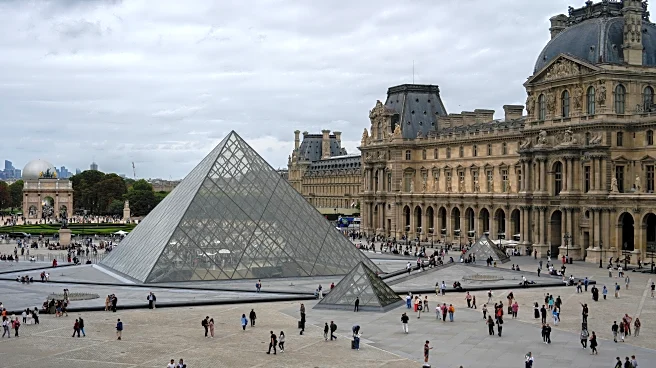What's Happening?
In a daring daylight heist, professional thieves broke into the Louvre Museum in Paris, stealing nine pieces of jewelry that once belonged to Emperor Napoleon. The robbery occurred on October 19, 2025,
and involved the use of an aerial lift and an angle grinder to access the museum through a window. The stolen items include a necklace, a brooch, and a tiara, with one piece, a crown believed to belong to Empress Eugenie, found damaged outside the gallery. The heist, which lasted only seven minutes, prompted the evacuation and closure of the museum as police responded to the scene. The thieves made their escape on two scooters, heading towards the A6 highway. No injuries were reported during the incident.
Why It's Important?
The theft of these historically significant jewels from the Louvre, the world's most visited museum, represents a significant cultural loss. The stolen items are of inestimable value, both monetarily and historically, as they are part of France's national heritage. The incident has sparked outrage in France, with political figures expressing concern over the security of national treasures. The potential for the jewels to be melted down or sold in parts poses a challenge for recovery efforts, complicating the task of preserving cultural heritage. This event highlights vulnerabilities in museum security and raises questions about the protection of valuable artifacts.
What's Next?
Authorities are likely to intensify their investigation to recover the stolen jewels and apprehend the perpetrators. The incident may prompt a review of security measures at the Louvre and other cultural institutions to prevent future thefts. There is also a possibility of increased international cooperation to track the stolen items, especially if they are smuggled out of France. The cultural and political implications of the heist may lead to discussions on enhancing the protection of national treasures.
Beyond the Headlines
The robbery at the Louvre underscores the ongoing challenges faced by museums in safeguarding valuable artifacts. It raises ethical questions about the responsibility of cultural institutions to protect their collections and the measures needed to deter sophisticated criminal activities. The incident may also influence public perception of museum security and the allocation of resources towards preserving cultural heritage.
